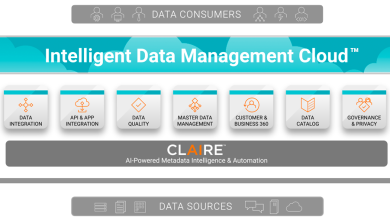
It makes sense in this digital-first era to migrate to the cloud or at least leverage some kind of hybrid cloud setup. There are numerous benefits of adopting this setup, including better flexibility and scalability, enhanced efficiency and agility, as well as reduced costs. However, there are certain challenges that businesses must address as they embrace a hybrid cloud architecture, the most pressing of which is security.

The reason security is such a major problem in hybrid cloud architectures is that it has inherent vulnerabilities, which include the following:
- Loss of resource oversight and control, including unsanctioned public cloud use.
- Lack of visibility into resources.
- Inadequate change control.
- Poor configuration management.
- Ineffective access controls.
Unauthorised users can, in turn, exploit these vulnerabilities to get unauthorised access to sensitive data and internal resources. When that happens, the costs can be unbearably high: Massive business loss, regulatory and compliance fines and a damaged reputation that can amount to USD $3.92 million—or even higher. This is reason enough to look for ways to boost your hybrid cloud’s security, and these tips can help you do just that:
- Think of security not as a product but as a process. Effective security is not just about deploying a security solution. Instead, it is about implementing a holistic approach that relies on people, implements processes and leverages technology. Doing so will allow you to get the most out of your security solutions and enable you to mitigate security risks better.
- Establish as much control as you can. Traditional perimeter-based security is not effective in hybrid cloud environments because they do not have a defined perimeter. The best thing you can do is to deploy centralised identity management and access control. Working on the principle of least privilege, this approach at least guarantees that access is granted only to authorised users and only for the intended purpose. This gives you a level of control over your hybrid environment.
- Get the most out of every layer. The hybrid cloud has multiple layers, including your operating systems, containers, assets and cloud services. Each of these layers has security capabilities, and you need to optimise and maximise them. In this way, you are creating a layered, defence-in-depth security strategy where the security capabilities of each layer contribute to your overall hybrid cloud security.
- Review your security processes and tools regularly. Make sure you are leveraging all available security features. Check as well if modifying or reconfiguring any settings can boost the security of your hybrid cloud, or if you need new capabilities and improved features.
- Automate strategically. Automation not only streamlines day-to-day operations but also integrates security into your infrastructure, processes and applications right from the very beginning. It also minimises misconfigurations and manual errors, which are two of the most common causes of a breach.
- Be open about open-source technologies. Open-Source technologies may be crucial to the success of hybrid cloud deployments but they can make you vulnerable if they are unsigned or are utilised in unsecure ways. It is imperative that you refrain from using open-source technologies from unknown sources and use them squarely for security.
As previously mentioned, a security solution is central to the holistic approach needed for robust hybrid cloud security. A common solution is to patch on solutions on an as-needed basis. But the better, more sensible one is to anchor your hybrid cloud to an operating system designed with security as among the top-of-mind concerns.

That anchor can be Red Hat Enterprise Linux (RHEL), whose three-point approach to security—mitigate, secure and comply— enables organisations to not only reduce security vulnerabilities but also protect data privacy and meet compliance standards. Specifically, RHEL boosts hybrid cloud security by:
- Incorporating built-in layers of security and authentication that defend against threats.
- Centralising identity and access control management across systems and system administrators.
- Implementing customisable cryptography policies spanning the entire system.
- Verifying system integrity and network security.
- Streamlining and scaling security management and functionality across the hybrid cloud.
Put simply, RHEL is designed to meet the high-security expectations of this digital-first world, and it can meet yours as well.
You can read more about boosting hybrid cloud security HERE.





